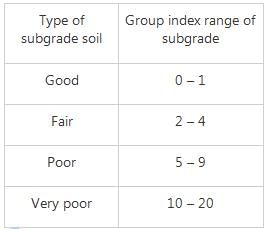Test: Transportation Engineering - SSC JE MCQ
20 Questions MCQ Test - Test: Transportation Engineering
Nagpur road plan formulae were prepared by assuming:
For water bound macadam roads in localities of heavy rainfall, the recommended value of camber is
Coefficient of friction is less when the pavement surface is:
The background colour of the informatory sign (direction and place identification sign) board is:
If in a Dorry abrasion test the loss in weight is 21 gms, then the coefficient of hardness is
A vehicle has a wheel base of 6.3 m, the off tracking while negotiating a curve path with a mean radius of 40 m.
Temperature of heating aggregate in Hot mix is in the range of
IRC has specified the maximum value of stripping value of bitumen not to exceed:
Which of following coat provides waterproofing and skid resistance to the pavement?
If the average centre to centre spacing of vehicle is 25 m, then the basic capacity of a traffic lane at a speed of 45 kmph is -
The capacity C of highway per hour is given by -
Equivalent passenger car unit in unit time of a truck is ________
The tie bars in a concrete pavement are provided in:





















